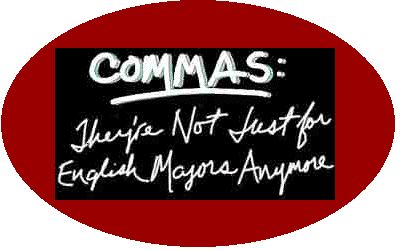Along with periods, commas are
the most commonly used punctuation in standard written English. Yet they
are also the most misused. The reasons for this are many, but come down
to two:
1) The first
is the misconception that the only reason we use commas is to signal the reader to pause.
2) Second is the idea
that there are something like 383 rules governing commas, each more arbitrary
than the next. There's no point in trying to master them all, so refer
to rule #1.
The
point of this site is to help you remember one thing: commas are a tool you
can use to help your reader understand what you've written.
How many comma rules are
there? Who cares? The real question is, When and how should we use commas
to make our meaning clear?
There are about five situations
in which you almost always need a comma. These situations account for 85%
of the comma errors in student papers. That means if you nail down
these five, and add them to what you probably already know about using commas,
you should be able to avoid most common errors.
Intro, Get Started, IE, CE, 2IC,
FANBOYS,
CA,
NRE,
Review
|
|
|
|
|
|
|
IE: Introductory Elements
|
|
|
2IC: Two Independent Clauses
|
|
|
CA: Compound or Coordinate Adjectives
|
NRE: Non-Restrictive Elements
|
|
|
|
|
|
|
|
|
|
|
|
|
|
|
|
